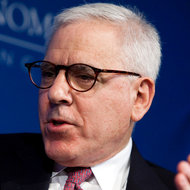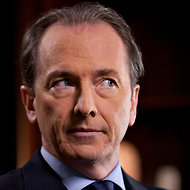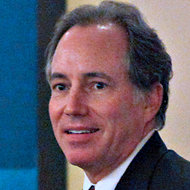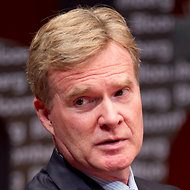The plan was announced on Wednesday alongside first-quarter results that saw sales at Britain’s biggest drugmaker drop a slightly smaller-than-expected 3 percent from a year ago.
GSK launched a strategic review of the two drink brands earlier this year, ruling nothing in or out for their future. Most analysts had focused on the idea of a sale, which is likely to attract interest from private equity and trade buyers.
Chief Executive Andrew Witty told reporters there had been significant interest in the products, though the decision to pursue a sale was “subject to appropriate value realisation”.
Japan’s Suntory Holdings has been tipped as a possible buyer after previously buying soft drinks maker Orangina Schweppes for more than 300 billion yen ($3.0 billion) and New Zealand’s No. 2 beverage firm Funcor Group in 2009.
A Suntory spokeswoman declined to comment on the company’s potential interest but, when asked about a recent report that it was in talks with banks about assembling a knockout bid, said: “We don’t acknowledge this report as factual.”
Private equity firms are also hungry for deals and the strong cashflows generated by Lucozade and Ribena could attract the likes of Blackstone, BC Partners, PAI, Lion Capital, Bain Capital, CVC Capital Partners and KKR.
Officials at the private equity houses declined to comment.
Lucozade and Ribena no longer fit well in GSK’s portfolio, since the company is focusing its consumer health operations increasingly on emerging markets, where both brands are relatively weak.
Although GSK does not break out detailed sales for the two products, they bring in nearly 600 million pounds a year, with much of that generated in Britain.
Both are veteran products – Lucozade was launched in 1927 and Ribena introduced just 10 years later – but remain popular. Assuming potential buyers are prepared to pay two times sales, that would point to a valuation of some 1.2 billion pounds.
Analysts at Deutsche Bank said they believed the two brands should bring in more than 1.5 billion pounds.
MATURE PRODUCTS SPIN-OFF?
GSK also said it was creating a new global established products portfolio, consisting of around 50 medicines with annual sales of some 3 billion pounds, including stomach acid treatments Tagamet and Zantac, Imitrex for migraine, and anti-nausea treatment Zofran.
Witty said placing these so-called “tail” products in a division that would report separately from next January opened various options, but he declined to say if the division might be sold off at a later stage.
Jefferies analysts, however, said the formation of the portfolio “looks like a precursor to a spin-off to us”.
GSK’s group sales in the first quarter fell 3 percent to 6.47 billion pounds, generating flat core earnings per share (EPS) of 26.9 pence.
Analysts, on average, had forecast sales of 6.40 billion pounds and core EPS, which excludes certain items, of 25.0p, according to Thomson Reuters I/B/E/S.
The three months to end-March were always going to be tough, due to a difficult comparison with a year earlier when GSK booked revenue from over-the-counter products and an incontinence drug that have since been sold.
GSK is expecting better times ahead as its pipeline starts to deliver – and it reiterated its 2013 expectations for sales growth, at constant exchange rates, of around 1 percent and core EPS growth of 3-4 percent.
Witty is banking on a number of new drugs to revive its fortunes in the next few years, including six that have already been submitted for approval in lung disease, melanoma, diabetes and HIV/AIDS.
Hopes for its new drug pipeline received a boost last week when a U.S. advisory panel recommended approval of Breo for smoking-related lung damage. The Food and Drug Administration is due to decide on the drug – a follow-on to GSK’s top-seller Advair – by May 12.
At 01:30 p.m. British time, GSK shares were little changed at 1,681 pence.
(Additional reporting by Anjuli Davies and James Topham; Editing by Kate Kelland and Mark Potter)
Article source: http://www.nytimes.com/reuters/2013/04/24/business/24reuters-glaxosmithkline-results.html?partner=rss&emc=rss













